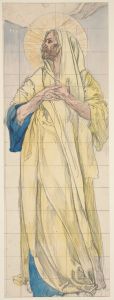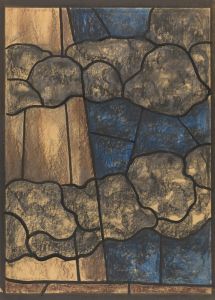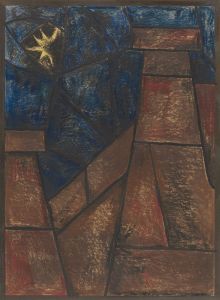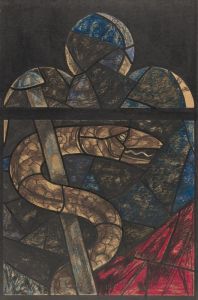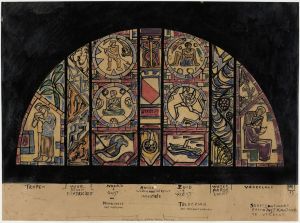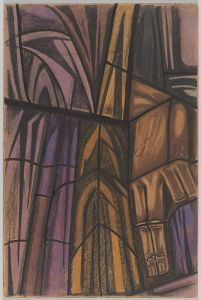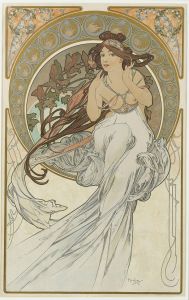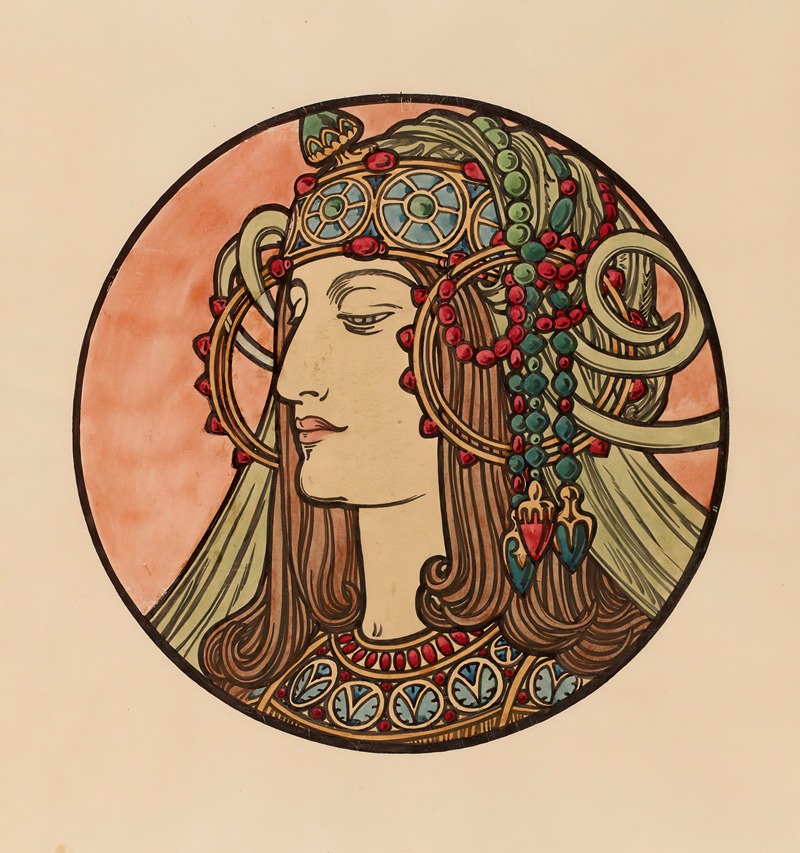
Vitrail pour la façade de la boutique Fouquet
A hand-painted replica of Alphonse Mucha’s masterpiece Vitrail pour la façade de la boutique Fouquet, meticulously crafted by professional artists to capture the true essence of the original. Each piece is created with museum-quality canvas and rare mineral pigments, carefully painted by experienced artists with delicate brushstrokes and rich, layered colors to perfectly recreate the texture of the original artwork. Unlike machine-printed reproductions, this hand-painted version brings the painting to life, infused with the artist’s emotions and skill in every stroke. Whether for personal collection or home decoration, it instantly elevates the artistic atmosphere of any space.
"Vitrail pour la façade de la boutique Fouquet" (Stained Glass for the Façade of the Fouquet Boutique) is a work designed by the renowned Czech artist Alphonse Mucha, a leading figure of the Art Nouveau movement. This piece was created as part of a larger commission for the Parisian jeweler Georges Fouquet, who sought to redesign his boutique in 1901. Mucha's collaboration with Fouquet is widely regarded as one of the most iconic partnerships in the Art Nouveau era, blending the artist's distinctive style with the jeweler's luxurious craftsmanship.
The stained glass was intended to adorn the façade of Fouquet's boutique, located at 6 Rue Royale in Paris. Mucha's design for the boutique, including the stained glass, reflected his characteristic use of flowing lines, intricate patterns, and natural motifs. The work exemplifies the Art Nouveau aesthetic, which sought to harmonize art and design with nature and modernity. The stained glass likely featured Mucha's signature elements, such as stylized floral patterns and elegant female figures, though specific details about the exact imagery of this particular piece are less documented.
The boutique itself was a masterpiece of Art Nouveau design, with Mucha overseeing not only the stained glass but also the interior decoration, furniture, and overall aesthetic. The collaboration marked a significant moment in the history of decorative arts, showcasing the seamless integration of architecture, design, and fine art. The boutique's interior was dismantled in 1923 but was later reconstructed and preserved in the Musée Carnavalet in Paris, where it remains a celebrated example of Mucha's artistic vision.
While the stained glass for the façade was an integral part of the boutique's original design, its current whereabouts or condition are not well-documented. Mucha's work for Fouquet, including this stained glass, continues to be studied and admired as a testament to the artist's influence on early 20th-century design and his enduring legacy in the Art Nouveau movement.





